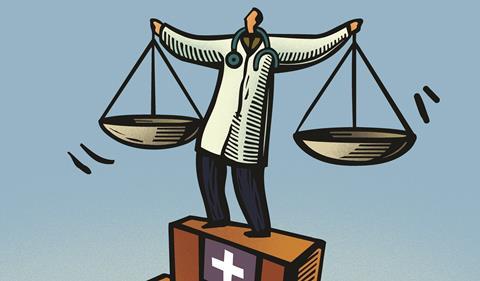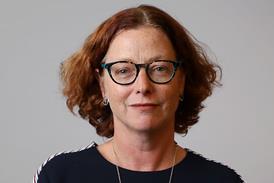With public health now settled in local authorities, a strategic approach can achieve tangible results in reducing health inequalities, write Vivienne Robbins, Mike Sandys and Dr Peter Goldblatt of the UCL Institute of Health Equity

Public health has been based back in local authorities for over a year, but the challenge has always been translating the significant amounts of evidence gathered into a strategic approach that produces results. This requires a big change in thinking about how staff are allocated and financial resources used to prioritise health inequalities.
‘The balance between public health being the lead, a partner and an advocate will vary with each local authority, but is key to reducing health inequalities’
Analysing reviews of health inequalities in England, the Marmot review and the World Health Organization European Region, effective interventions are available to local authorities to make tangible differences to reducing health inequalities.
These can be grouped into areas to do with early years; safe communities; ensuring good quality work; and licensing for wellbeing and housing.
A new ‘new’
The breadth of these interventions highlights how public health must work with partners to develop a whole of government, whole of society approach to addressing the social determinants of health, and to reduce health inequalities.
To do this, a “new, new public health” system needs to be developed with three key roles: a lead, a partner and an advocate:
- Lead: when public health has both knowledge and control over the effective means and can lead implementation of an initiative; for example, allocation and implementation of the public health grant.
- Partner: here, public health has key knowledge about the health impact of other departments’ policies, but has little control over implementation or the knowledge on how measures could be framed, such as early years or housing.
- Advocate: in this role, public health has the knowledge of health impacts of other departments’ policies but has no control over the initiative, like the health links of climate change, transport or planning.
The balance between public health being the lead, a partner (developing joint initiatives) and an advocate (championing public health issues) will vary with each local authority, but is key to successfully reducing health inequalities.
Many public health departments post-transition have concentrated on the lead role, ie: moving contracts over from the NHS and establishing governance systems. However, to make use of the opportunity of being based in local authorities, public health should prioritise building on the advocacy role and moving more departments into active partnership roles, thus developing a whole of government approach to reducing health inequalities.
Such an approach involves public health using effective influencing or selling of the wider (non-health) benefits of health inequality interventions, developing formal cross-local authority governance structures, strong accountability and performance monitoring. This would result in public health staff and budget resources being allocated differently, supporting the shift from advocacy into partnership.
Raiding budgets
Alongside the opportunities arising from public health moving back into the local authority are a number of challenges, including the raiding of the same public health grants for wider local authority services that have been hit by cuts in other departments’ budgets. As such, public health must balance the partner role while protecting its own budget.
‘Now that systems are settling in the local authority, public health has an exciting opportunity to make a real impact’
The levers for public health have also changed in local authorities, with a strong evidence base no longer being enough to convince elected members to prioritise health inequalities or wider public health interventions.
Public health must learn to sell the co-benefits or wider selling points of the intervention, sometimes to the extent of not mentioning health at all.
For example, early years interventions not only improve the health, education, employment and wellbeing outcomes of the child, but also offer support to young parents as an integral part of youth healthcare, and reduce the incidence of child abuse.
Thinking differently
Now that systems are settling in the local authority, public health has an exciting opportunity to think differently and make a real impact on reducing health inequalities.
‘The project supports key evidence in reducing health inequalities by tackling the wider determinants of health’
For example, public health has had a key partner role as part of the better care fund, working with district councils, adult social care, and health and voluntary organisations to develop an evidence based approach.
As part of the fund, the Light Bulb Project is currently being developed in Leicestershire – an innovative project that will enable and empower people to remain independently at home by delivering integrated practical housing support.
This will be through a single, trusted and easily accessible service that is tenure neutral, income generating, stigma free and shaped around a person’s needs – not an organisation’s threshold or capacity.
The project brings together housing support budgets across Leicestershire’s seven district and county councils to provide a range of services including home adaptations, disabled facilities grants, affordable warmth, home safety, housing based support, handy person services, assessments, aids and equipment assistive technology.
It will improve system efficiency, quality, access and reduce avoidable hospital admissions (especially due to home injuries), hospital bed days and falls.
The project also specifically supports key evidence in reducing health inequalities by tackling the wider determinants of health and providing a “proportionate universal” service that is available to people, regardless of tenure or levels of income. (People not eligible for publicly funded housing support would be able to pay for services, thus contributing towards the on-costs of the organisation.)
Moving from an advocate to a partner
In 2012, Leicestershire County Council moved the once consultative advocate relationship between public health and the environment and transport department – including travel choice and access team– into an engaged partner role.
Key outcomes include an evidence-based local transport plan with shared aims. In 2013, this also included joint project funding for interventions around travel advice, and encouraging cycling and walking.
This has removed service duplication between the two departments, allowing more effective allocation of resource and further linking between the interventions, for example, initiating GP referrals onto adult cycling training courses.
The key to developing the partner relationship was establishing a commissioning panel for sport and physical activity and providing opportunities for representation on each department’s working groups, including the health and wellbeing board.
Delegated responsibilities in each team also allowed members of the environment and transport team to develop relationships with members of the public health department, sustainably securing the partner role.
Now that public health systems are becoming settled in local authorities, public health has an exciting opportunity to prioritise the partner role, to develop a whole of government approach to reducing health inequalities.
Cost rationale
The Light Bulb Project is developed on evidence that housing adaption is a cost effective intervention for health and social care, with the NHS spending £2.5bn a year on illness due to poor housing, £146m treating accidental home injuries in children and young people, and £2bn on falls and fractures in over-65s.
‘Effective use of public health’s partner role would deliver significant overall health and wellbeing outcomes’
Specifically for this project, the National Institute for Health and Care Excellence has also estimated that offering home safety assessments to families with young children and installing safety equipment in the most at risk homes would cost £42,000 per average local authority.
If this prevented 10 per cent of injuries, it could save £80,000 in prevented hospital admissions and emergency visits, with further savings in associated GP visits and for ambulance, police and fire services.
Effective use of public health’s partner role, such as the Light Bulb Project, would therefore deliver significant overall health and wellbeing outcomes to the Leicestershire population, while supporting a reduction in health inequalities across the county. A phased rollout is due to start in April 2015-16.
Now that public health systems are becoming established in local authorities, public health has a great opportunity to prioritise the partner role, to develop a whole of government approach to reducing health inequalities.
Vivienne Robbins is public health specialty registrar at Leicestershire County Council; Mike Sandys is director of public health at Leicestershire County Council and Rutland County Council; Dr Joanna Nurse is consultant at Public Health England and Dr Peter Goldblatt is deputy director at the UCL Institute of Health Equity



























No comments yet